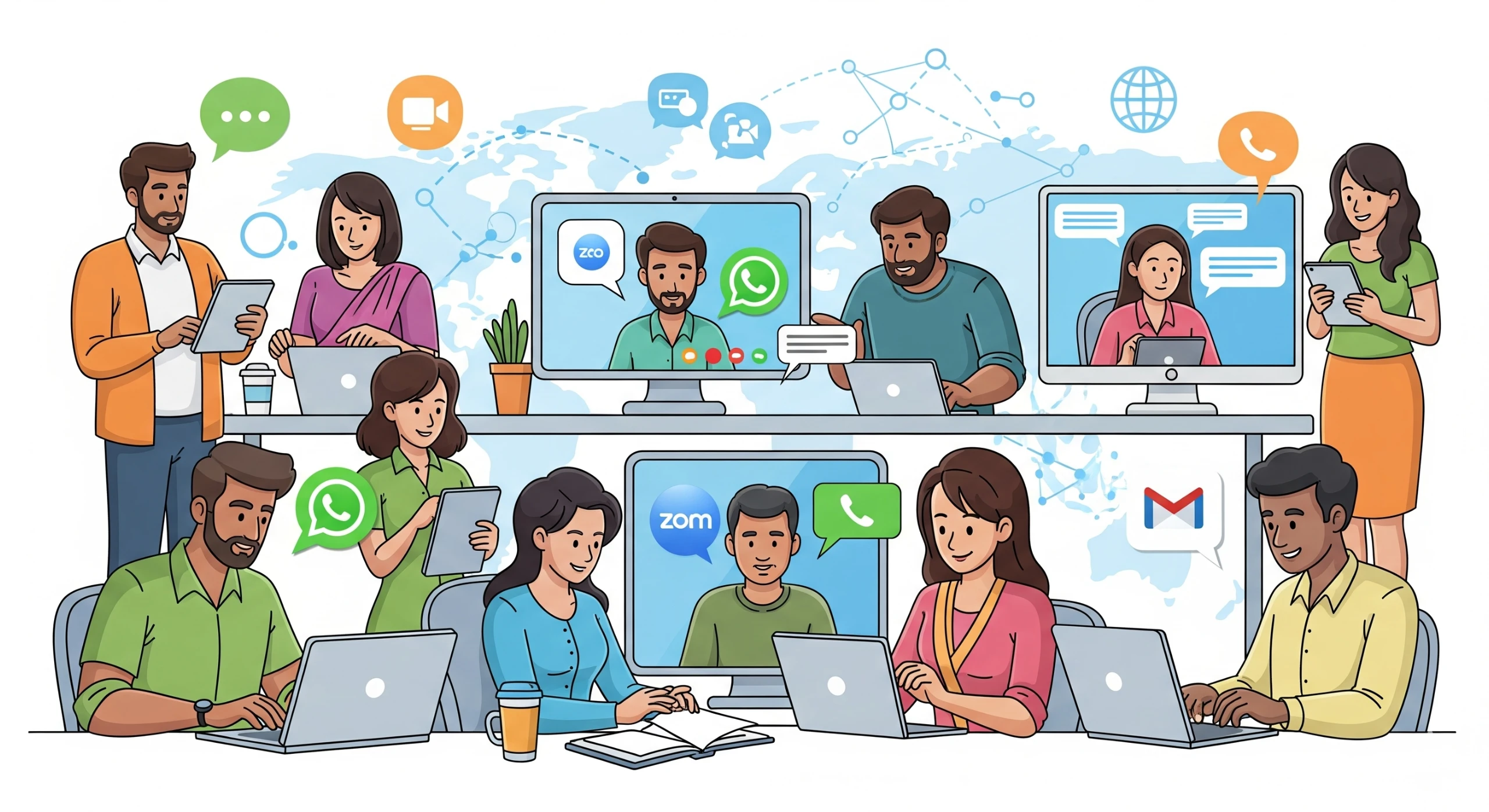How Advance Digital Communication Enhances User Experience in Mobile Apps

Our smartphones have turned into lifelines always buzzing with reminders, payments, chats, and entertainment. But why do some apps glide like a dream while others make us pull our hair in frustration? The difference lies in the power of digital communication, which quietly works behind the scenes to shape how smooth, fast, and personal the user experience feels.
Just like good conversation makes relationships stronger, advanced digital communication makes our bond with mobile apps more enjoyable, reliable, and meaningful. Let’s dig deeper into how this works and why it matters so much in India, where mobile is the lifeline for millions.
1. Digital Communication is the Soul of Mobile Apps
Imagine you go to a shop, and the shopkeeper does not listen to your needs properly. Would you visit again? Same is the case with mobile apps. If communication between the app and user is broken, the trust goes out of the window. Advanced digital communication ensures that apps don’t just “talk” but also “understand” the user. Whether it is instant chat, voice assistant, or even AI-powered recommendations, everything depends on how smartly communication happens in the background.
For example, when you open a food delivery app and instantly see restaurants near you, it is not magic. It is advanced digital communication working silently to fetch real-time data and present it in an easy manner.
2. Speed is the King
In India, we often say “time is money.” The same holds true for mobile apps. Users expect instant results. A delay of even two seconds feels like a lifetime. Thanks to advanced digital communication protocols, apps now deliver information faster than ever. Techniques like 5G integration, cloud computing, and real-time API communication make apps load quickly, show live updates, and allow smooth video calls without buffering.
Think of UPI transactions. Earlier, transferring money took hours or even days. Today, with one tap, you send money instantly, and the confirmation message comes like clockwork. This magic is possible only because of faster digital communication methods.
3. Personalisation
In India, we love personal touch. Whether it is a cup of chai served “just the way you like” or a tailor-made kurta, personalisation always wins hearts. Mobile apps are learning the same trick. With advanced digital communication, apps track user behaviour, preferences, and feedback in real-time. They then present personalised recommendations, offers, and content.
For instance, when you open an OTT app, it already knows what kind of movies you enjoy romantic Bollywood masala, south thrillers, or cricket highlights. This personalisation is not guesswork; it’s smart communication between your device, the server, and AI algorithms.
4. Seamless Digital Communication Across Platforms
We Indians love “jugaad,” but when it comes to apps, nobody wants patchy connections or broken features. If you start chatting on your phone and later continue on your tablet, it should feel like butter-smooth experience. Advanced digital communication makes cross-platform syncing possible. Your messages, shopping cart, or fitness data automatically updates across devices. It feels like magic, but it is pure science of advanced data exchange.
Think of WhatsApp Web. You open your laptop, scan a code, and boom all your chats appear instantly. This is a perfect example of how advanced communication creates seamless user experience.
5. Security
In India, there is a saying: “Once bitten, twice shy.” If an app ever leaks personal data, users lose faith forever. Trust, once broken, is very hard to rebuild. That’s why advanced digital communication also focuses on secure channels. End-to-end encryption, biometric authentication, and multi-factor verification are not just fancy words. They are shields protecting users’ privacy.
When you book a ticket on IRCTC or pay bills on Paytm, advanced security protocols ensure your data travels safely. Without such communication technologies, the whole digital revolution would collapse like a house of cards.
6. Real-Time Feedback
Earlier, apps were like one-way radios. Developers would launch them, and users had no way to interact directly. Today, thanks to advanced digital communication, feedback flows both ways. Users can share reviews instantly, report bugs, or chat with customer care within the app itself. On the other hand, apps send push notifications, reminders, and personalised alerts in real-time.
Think about Swiggy’s live order tracking. You can see when your food is being prepared, picked up, and delivered. This transparency is nothing but a brilliant example of two-way digital communication enhancing user experience.
7. Voice and Visual Digital Communication
Gone are the days when communication meant only text. With smart voice assistants like Alexa or Google Assistant, mobile apps now interact through natural conversation. Similarly, video-based interactions like live shopping, telemedicine, or online classes have become part of everyday life in India. This would not be possible without advanced communication technologies like VoIP, AI-driven speech recognition, and low-latency streaming.
When a farmer in a small Indian village can consult a doctor via video call, that’s the power of digital communication making life easier and bridging the urban-rural gap.
8. Cultural Relevance – Speaking the User’s Language
India is a land of many languages, dialects, and cultures. If an app communicates only in English, it cuts off a huge section of the population.
Advanced digital communication enables multilingual support, localised content, and even regional voice commands. Today, you can use banking apps, e-commerce platforms, or OTT apps in Hindi, Tamil, Telugu, Bengali, or Marathi. This local touch doesn’t just attract users; it creates emotional bonding.
9. Reducing Frustration
Let’s be honest. Everyone gets irritated when apps crash, hang, or show error messages. Users don’t care about technical jargon; they just want smooth sailing.
Advanced communication tools now include intelligent chatbots and AI helpers that resolve issues instantly. Instead of waiting on long customer care calls, users get answers within seconds. This human-like support reduces frustration and builds loyalty.
10. The Road Ahead – Future of Digital Communication in Mobile Apps
India is witnessing a digital boom like never before. With 5G rolling out, affordable smartphones entering villages, and startups mushrooming in every corner, the future of mobile apps looks brighter than Diwali night. But to keep shining, apps must continue focusing on how advance digital communication enhances user experience in mobile apps. From AR/VR-based shopping to AI-powered education, the journey has just begun.
One thing is clear: the apps that master communication will stay ahead of the game, while others will fade into oblivion.
Conclusion
Mobile apps are no longer just tools; they are companions in our daily life. Whether it is ordering food, chatting with friends, watching movies, or managing money, everything depends on how smoothly apps communicate with us. By ensuring speed, security, personalisation, and real-time engagement, advanced digital communication makes apps more user-friendly and reliable. In simple words, it is the invisible bridge that connects technology with human emotions.
So next time you enjoy a flawless video call, quick UPI payment, or personalised movie recommendation, remember it’s not magic. It’s the power of advance digital communication enhancing user experience in mobile apps.
For expert Custom Software Development Services tailored to your business needs, explore our Software Development Services.
